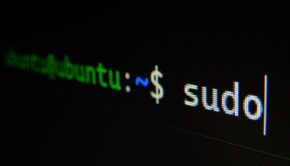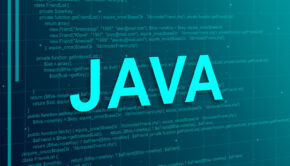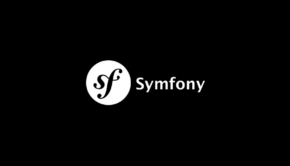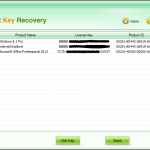Python – From Past to the Future
The history of innovation of Python is very different from the ordinary. It was, in fact, a constructive and profitable result of “an ideal mind is a devil’s workshop”. I know, surprising right? The origination of Python began in the late 1980s when Guido Van Rossum used to work at CWI as an implementer of the programming language called ABC. After the ABC project got terminated, he joined the Amoeba OS team where in his free time he kept looking for a scripting language with a syntax like ABC with access to Amoeba system calls. And Python was the result of this work research he did in his spare time.
Here’s a fun fact – Python isn’t named after the snake (as many assume). In fact, Guido named it Python while watching a comedy series called “Monty Python’s Flying Circus”.
Python was discovered with a vision of a flexible and general-purpose language hence, it is simple to use and easy to read. Let me take a moment here to give you a heavy technical definition for Python – “Python is a multi-paradigm programming language which supports object-oriented programming, structured programming, and functional programming patterns.” For better understanding, let’s break these hefty words into simple points –
- Python is a high-level programming language that is easy to read and simple to implement.
- It is free to use since it is open-source.
- It can run on Mac, Windows, and Unix systems and has also been ported to Java and .NET virtual machines.
- Python is often used for creating Web applications and dynamic Web content.
- It is supported by many 2D and 3D imaging programs, enabling users to create custom plug-ins and extensions.
- Scripts in Python can be parsed and run immediately. These scripts can be saved as compiled programs (.PYC files) and used as programming modules that can be referenced by other Python programs.
Python implementation amongst brands
- Google: Python is one of the official Google server-side languages as the founders of Google made the decision of “Python where we can, C++ where we must.” Even when Google scripts were written in Perl or Bash, these were often re-coded into Python because of the ease of deployment and simple maintenance. According to Steven Levy, author of “In the Plex,” Google’s first web-crawling spider was written in Java 1.0 which was so difficult that they rewrote it into Python.
- Facebook: According to Facebook, Python is used for multiple services in infrastructure management including TORconfig to handle network switch setup, FBOSS for white-box switch CLIs, and Dapper for scheduling and execution of maintenance work. Facebook engineers are exceptionally keen on Python, making it the third most popular language at the social media giant.
- Instagram: In 2016, the Instagram engineering team boasted about how they were running the world’s largest deployment of the Django web framework, written entirely in Python. Since then, Instagram’s engineering team has invested a lot of time and resources to keep their Python deployment viable at a massive scale.
- Spotify: It is a huge proponent of Python, using the language for data analysis and back end services. In the back end, there are a lot of services that communicate over 0MQ, or ZeroMQ, an open source networking library and framework that is written in Python and C++.
- Quora: The founders of Quora took their lead from Google, and chose to use Python where they could because of its ease of writing and readability, and implemented C++ for the performance critical sections. Another key point for using Python was the existence of several good frameworks like Django and Pylons.
Fun fact number 2 – Python has a secret weapon – Python Software Foundation (PSF). It is a non-profitable foundation whose mission is to promote and advance Python and also facilitate the growth of a diverse and international community of Python programmers. They do a lot of outreach and distribute funds from their non-profitable organization, host PyCon US, and support multiple Python conferences held all over the globe.
The Growth of Python
Stack Overflow indicates that Pandas is the fastest growing Python package and it is responsible for 1% of Stack Overflow question views. Python has cemented its place in the top three most popular programming languages, as it had the largest rise in Tiobe’s search engine based rankings. Python gained 2.39 percentage points from 2018 to 2019 in Tiobe’s January 2019 index. According to Tiobe, Python is often the first language taught at universities and it is the go-to language for machine learning, statistical analysis, scripting, programming etc.
Now that we have seen the growth of Python, let us look at the factors that are leading to this enormous growth:
- Data science libraries: Top Data science libraries of Python are
- Pandas: It is a free software that offers data structures and operations for manipulating numerical tables and time series.
- NumPy: NumPy adds support for large, multi-dimensional arrays and matrices, along with a huge collection of high-level mathematical functions to operate on these arrays.
- Matplotlib: It is a Python 2D plotting library for producing publication quality figures in a variety of hardcopy formats and interactive environments.
- Web development frameworks:
- Django: encourages rapid development and clean, pragmatic design.
- Flask: Flask is built with a small core and easy-to-extend philosophy and is considered more Pythonic than Django because Flask web application code is in most cases more explicit.
- Simplicity & convenience: Python is comparatively easier than other programming languages hence, becomes an easy alternative for beginners. Python is simple and readable which gives it an edge over languages like Java and C++ where the coder has to deal with classpath & compiler problems.
- Multipurpose: Unlike other languages, Python can be utilized in more multiple technologies which set it apart from other languages.
Although Guido van Rossum said that “I didn’t set out to create a language that was intended for mass consumption,” his invention most certainly has overtaken many programming languages.
Python has a great scope to grow on a human scale since it is a convenient language for newbie developers. New (or even experienced) developers can learn Python easily and be productive very quickly. This is also one of the factors that make the future of Python promising. Python is a lovely blend of elegance, flexibility, and capability. The scaling capacity of the language and welcoming nature of the Python community are the two things that will continue to make Python compelling in the future.
















